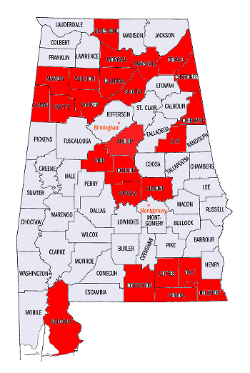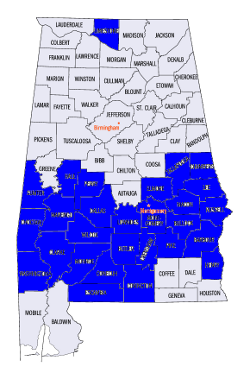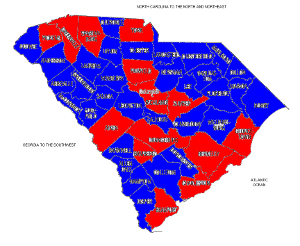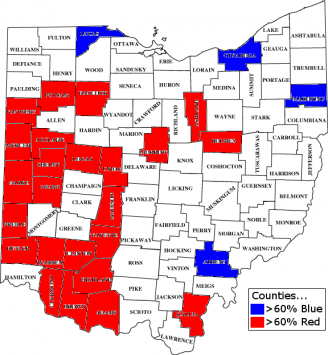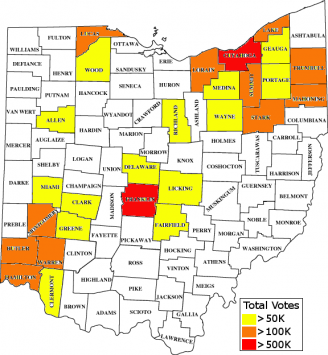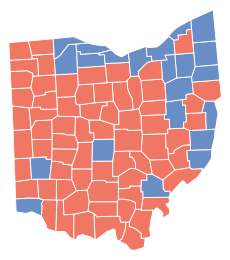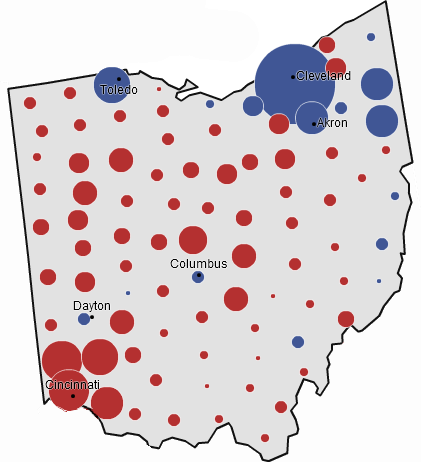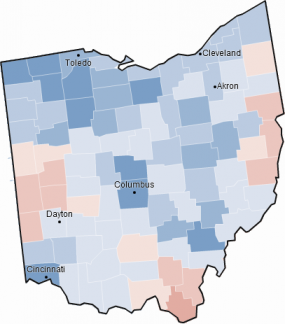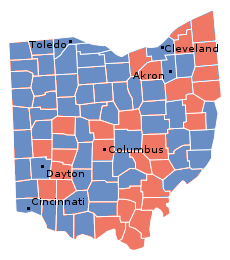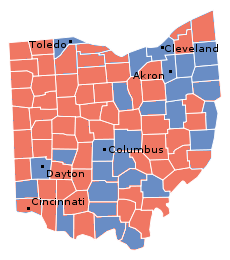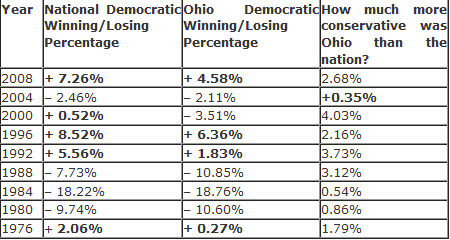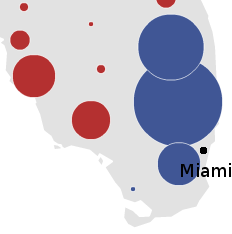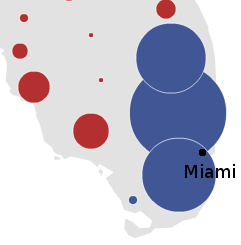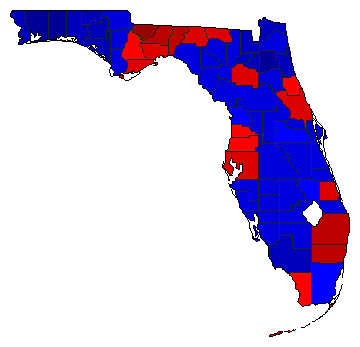• Volunteering: Marriage/partnership equality campaigns in three states are looking for help down the home stretch. The best part is, you don’t even have to leave your chair – all three organizations are looking for folks to make calls to help get out the vote. So if you’d like to help, follow the links for Maine, Washington state, and Kalamazoo, Michigan. The folks in Kalamazoo are also looking for in-person volunteers – click here if you are in the area. (D)
• CT-Sen: With Joe Lieberman back to his usual self-promoting mavericky ways, vis a vis the public option, and with the netroots worked up into a lather, it’s a perfect time for Ned Lamont to step back into the spotlight. The 2006 Democratic primary winner attacked Lieberman’s statements, although he sounded interested but noncommital about the idea of a 2012 rematch.
• FL-Sen: Here’s another sign that the Charlie Crist camp is starting to take the Marco Rubio threat more seriously. They’ve launched an anti-Rubio website, TruthAboutRubio.com.
• KS-Sen: Oklahoma’s Jim Inhofe endorsed Rep. Todd Tiahrt in the GOP primary in the open seat Senate race in Kansas. Inhofe seems to be the first sitting senator to endorse Tiahrt (although Rick Santorum already did); several senators (John McCain, John Thune, and Inhofe’s colleague Tom Coburn) have already endorsed the less hardline Rep. Jerry Moran.
• MA-Sen: Rep. Niki Tsongas (the only woman in the Massachusetts House delegation) endorsed AG Martha Coakley in the Dem primary for the upcoming Senate special election. It’s Coakley’s first endorsement from a House member; four other House members have gotten behind Rep. Michael Capuano.
• PA-Sen, PA-Gov (pdf): Franklin & Marshall has another poll of the Pennsylvania races out, and like a lot of other pollsters, they’re finding that people aren’t very enthused about Arlen Specter, and are getting even less enthusiastic, giving him a 28/46 favorable (down from 35/42 in August), and a 23/66 reading on the “deserves re-election” question. Specter currently leads ex-Rep. Pat Toomey 33-31 (down from 37-29 in August), and beats Rep. Joe Sestak in the Dem primary 30-18 (down from 37-11). Sestak loses to Toomey, 28-20. F&M also look at the gubernatorial primaries (no general matchups, though). AG Tom Corbett leads on the GOP side over Rep. Jim Gerlach, 30-8, while the Dem field plays out: 10 for Allegheny Co. Exec Dan Onorato, 9 from Auditor Jack Wagner, 6 for ex-Rep. Joe Hoeffel, 3 for Tom Knox, and 3 for Scranton mayor Chris Doherty.
• SD-Sen: Democrats may turn to an old family name for a Senate candidate against John Thune: Mark McGovern, the 37-year-old grandson of former Senator and presidential candidate George McGovern. McGovern is state director for Repower America, a clean energy advocacy group, and was state director for the 2008 Obama campaign.
• CT-Gov: The campaign for Democratic SoS Susan Bysiewicz is making references to an internal poll that has her trailing by only 6 to the once-thought-unassailable Jodi Rell in 2010, 47-41. (And that assumes Rell runs — given her fundraising, and now the possibility of a hard race, she may not be on track to do so.) The poll also finds Bysiewicz overperforming Stamford mayor Dan Malloy (who loses to Rell 52-31), and beating Malloy in the primary, 44-12.
• SC-Gov: An impeachment resolution against Mark Sanford was introduced today by Republican state Rep. Greg Dellenny during the brief special session. However, fellow Republican speaker Bobby Harrell ruled it out of order, as outside the scope of the special session. It’ll have to wait until January.
• VA-Gov (pdf): Looks like we’ll have to wait another day (and probably a lot longer than that) for signs of life in the Virginia gubernatorial race. Virginia Commonwealth issued their first poll of the race, giving Bob McDonnell a 54-36 edge over Creigh Deeds (51-33 without leaners pushed). Rasmussen chimes in with similar numbers at 54-41 for McDonnell (finding a spreading McDonnell lead like most pollsters; two weeks ago they had it at 50-43). Pollster.com‘s regression line has the overall total moving today to the exact same result: 54-41.
• TX-Gov: Maybe this falls under the category of an endorsement you don’t really want to tout, but Kay Bailey Hutchison needs every vote she can get in what looks like a tight GOP primary with incumbent Gov. Rick Perry. KBH secured the endorsement of Dick Cheney today.
• CA-19: I’m still not sure what conservative Rep. George Radanovich did to wrong the local GOP, but the hunt goes on for an even more conservative Republican to challenge him in the primary. One possible challenger is former Fresno mayor Jim Patterson, who’s looking for a new political gig. (Patterson ran for Congress in 2002 in then-new CA-21, losing the GOP primary to Devin Nunes.) Patterson may also be interested in replacing termed-out Mike Villines in the state Assembly.
• FL-08: Buried in a longer Politico piece titled, appropriately, “Rivals shy away from Alan Grayson” are three more potential Republican challengers: first-term state Rep. Eric Eisnaugle, attorney Will McBride (who lost the 2006 Senate primary to Katherine Harris), and businessman Bruce O’Donoghue. O’Donoghue, who’s close to Mel Martinez, sounds like the likeliest of those three to run.
• NY-23: Big money continues to flow into the 23rd on the pro-Bill Owens side, with another $245K from the DCCC, and $200K from the AFSCME. MoveOn.org has also started flogging this race in its fundraising e-mails, saying that it’s a chance to rebuke the Palin/teabagger wing of the GOPers. Meanwhile, Doug Hoffman continues to rack up the endorsements from people that no one in the 23rd has ever heard of: South Carolina Sen. Jim DeMint, California Rep. Dana Rohrabacher, and even Oklahoma House candidate Kevin Calvey and California Senate candidate Chuck DeVore. RNC chair Michael Steele is still standing by Dede Scozzafava, though.
• TN-09: It looks like former Memphis mayor Willie Herenton may self-destruct before Rep. Steve Cohen even lays into him in the Dem primary in the 9th. Herenton is reportedly the target of a criminal probe by the local US Attorney’s office focusing on “personal business transactions” during his time as mayor. Herenton, naturally, is calling the investigation politically-motivated.
• VA-02: Here’s a screwup for Ben Loyola, one of the Republicans jostling to take on freshman Dem Rep. Glenn Nye and one who made a big self-funding impact last quarter. Loyola may have low-balled estimates of the value of a division of his company that he sold to a Swedish firm, at best a disclosure violation in terms of reporting his net worth, and at worst an illegal campaign contribution.
• EMILY’s List: EMILY’s List added four Democratic House members to its list of endorsees. Three are swing-district freshmen (Debbie Halvorson, Ann Kirkpatrick, and Dina Titus), and the other one is the perpetually shaky Carol Shea-Porter.
• WA-Init: A slew of polls out of Washington yesterday and today, containing good news. UW’s Washington Poll finds that R-71 (a referendum in favor of expanded domestic partnership) is passing 57-38, while I-1033 (the latest TABOR-style anti-tax initiative from initiative huckster Tim Eyman) is failing 40-49. These numbers are confirmed by SurveyUSA, which finds R-71 passing 50-43, and I-1033 going down 38-50. The Washington Poll also looks at the King County Executive race, which (though ostensibly nonpartisan) sees Democratic county councilor Dow Constantine beating Republican former news anchor Susan Hutchison 47-34 — they don’t have trendlines, and the only comparison point is SurveyUSA, who last showed Hutchison with a surprising 47-42 lead, so this one still bears watching. The Washington Poll finds Joe Mallahan leading Mike McGinn in the Seattle mayor’s race, 44-36.
• Census: An independent analysis of the effect of the proposed David Vitter legislation that would only count U.S. citizens for purposes of reapportionment finds a very different looking House. California post-2010 would lose five House seats, and Texas would gain only one House seat (instead of the projected three). The proposed change would also spare Iowa, Louisiana, Michigan, and Pennsylvania the expected loss of one seat each. (The study is worth a look also because it projects which states gain and lose seats according to normal rules, and also looks at which metro areas are experiencing ‘brain drain.’)
